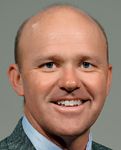- Case-Based Roundtable
- General Dermatology
- Eczema
- Chronic Hand Eczema
- Alopecia
- Aesthetics
- Vitiligo
- COVID-19
- Actinic Keratosis
- Precision Medicine and Biologics
- Rare Disease
- Wound Care
- Rosacea
- Psoriasis
- Psoriatic Arthritis
- Atopic Dermatitis
- Melasma
- NP and PA
- Skin Cancer
- Hidradenitis Suppurativa
- Drug Watch
- Pigmentary Disorders
- Acne
- Pediatric Dermatology
- Practice Management
- Prurigo Nodularis
- Buy-and-Bill
Article
Spend time considering pros, cons of modality's 'fit' in your practice
Author(s):
As new cosmetic treatments are introduced and physicians' understanding of existing treatments grows, determining whether a particular technology fits in one's practice requires evaluating arguments both pro and con, says the president of the American Society for Laser Medicine and Surgery (ASLMS).
As new cosmetic treatments are introduced and physicians' understanding of existing treatments grows, determining whether a particular technology fits in one's practice requires evaluating arguments both pro and con, says the president of the American Society for Laser Medicine and Surgery (ASLMS).

For starters, he says, Fraxel (Reliant Technologies) is the hot item this year. At this time last year, users' experience with the device was limited to a handful of cases, Dr. Burns says. This year, ASLMS presenters have eight to nine months' heavy use, which has helped to refine the equipment's role, he notes.
IPL can address dyschromias in these areas, and, when properly used, it's extremely effective on the face, Dr. Burns says.
However, he adds, "Fraxel takes it to another level with regard to being able to address problems such as fine wrinkles in a very safe yet effective way."
Granted, Fraxel is less effective for this purpose than CO2 or erbium laser resurfacing, he allows, "But it's much more effective for fine lines and wrinkles than standard IPL," he says.
LESS DOWNTIME
Fraxel also requires less downtime than ablative laser resurfacing modalities, Dr. Burns says.
The counterpoint, he says, is that Fraxel must be repeated three or four times. So that minimal downtime, when multiplied by four, is what a physician must weigh against the downtime required for a light erbium peel, which requires two to three days for open-wound healing, then seven to 10 days for erythema resolution.
"IPL plus ALA is effective," Dr. Burns adds, "but it has the problem of sun sensitivity and the need for sun avoidance for a few days afterwards."
And while IPL plus ALA may require more downtime than Fraxel, it doesn't create the uniform open wound of an ablative procedure, he says.
OTHER TECHNOLOGIES
Other emerging dermatoplastic technologies include plasma skin rejuvenation (Portrait PSR3, Rhytec).
Dr. Burns says that although this technology has received a big marketing push over the past year, "It's really not all that new."
Positive attributes of plasma skin rejuvenation include its ability to provide superficial ablation with relatively minimal downtime, he says. However, workshop speakers pointed out that this technology is probably less precise than an erbium laser.
"And when one gets aggressive with plasma skin rejuvenation to try to mimic the results one can get with a CO2 or erbium laser, the downtime is essentially the same," Dr. Burns adds.
Therefore, he says that although the plasma energy source is unique, "The end result is not unique. It produces an ablative wound that is less precise, according to some authors."





